Between 1933 and 1934, John Dillinger and his fearsome gang terrorized the Midwest while robbing banks and organizing prison breaks — and soon he was the most wanted "public enemy" in the country.
John Dillinger, the notorious gangster of Depression-era America, didn’t live a long life, but he spent the majority of his 31 years in some kind of trouble.
He quickly gained notoriety as one of America’s leading celebrity criminals, commanding the entire country’s attention with his gang’s bold bank robberies and ruthless murders. His face appeared in newspapers so often that he was as recognizable as any Hollywood film star.

Federal Bureau of InvestigationA 1924 mugshot of John Dillinger.
John Dillinger even unintentionally made the FBI what it is today. J. Edgar Hoover, who was the director of the less-powerful Division of Investigation at the time of Dillinger’s spree, used the criminal as justification to transform the agency into a stronger federal police force that could effectively operate across state lines.
However, Dillinger’s reign of terror came to a swift end in 1934. And like most famous criminals, his death was as violent as his dealings.
The Troubled Childhood Of John Dillinger
John Herbert Dillinger was born in Indianapolis in 1903. His parents already had a 14-year-old daughter named Audrey, and when their mother died in 1907, their father quickly married Audrey off and sent John to live with her and her new husband. A few years later, after his father remarried and Audrey’s family grew too big to manage, John moved back in with his dad.
By that point, the young Dillinger was already a handful. He bullied kids at school and had become the head of a neighborhood gang that stole coal from railroad cars. This led to his first run-in with the law, which ended in nothing more than a stern lecture from a local judge.
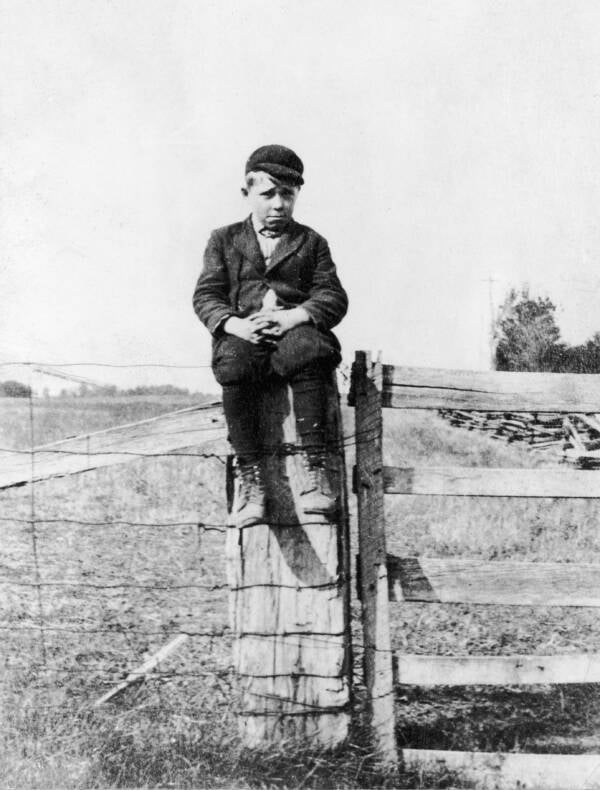
Hulton Archive/Getty ImagesFuture FBI “Public Enemy Number One” John Dillinger as a young boy.
By the time he was 16, John Dillinger had dropped out of school and was working at a machine shop in Indianapolis. He often stayed out late at night drinking with his friends, so his father soon moved the family to rural Mooresville, Indiana, hoping that country life would influence his son to turn his life around.
The move came too late for Dillinger. He had already been molded into a young man who always seemed to be looking for trouble. In 1923, when he was 20 years old, he stole a car to impress his date. He was arrested, but he managed to run away from the police officer. The next day, Dillinger enlisted in the U.S. Navy to avoid punishment.
His time in the military was short-lived. Predictably, Dillinger had a problem with maintaining discipline and following orders, and he deserted his ship while it was docked in Boston just five months later. He was dishonorably discharged and returned home to Indiana, where his real life of crime began.
Marriage, Robbery, And A Nine-Year Stint In Prison
Back in Mooresville, 20-year-old John Dillinger bounced around from job to job and from woman to woman. He eventually met 16-year-old Beryl Hovious, and they were married on April 12, 1924.
Despite appearances, however, Dillinger had not changed his ways. When he found that he was unable to hold down a job in order to support his new family, Dillinger turned to the only thing he knew: crime.

Public DomainJohn Dillinger sporting his signature grin.
Less than six months into his marriage, Dillinger and his friend Ed Singleton decided to rob a local grocer named Frank Morgan, who was returning home with his cash from the week. In his official statement about the crime, which was sold by RR Auction in 2023, Dillinger recounted:
“When [Morgan] came along I jumped out from behind the building and hit him twice on the head with a bolt which I had wrapped up in a handkerchief. He then turned and grabbed a revolver which I had in my hand. The gun was discharged when I jerked it away from him, the bullet entering the ground. We then ran.”
Dillinger’s father talked him into confessing, pleading guilty, and asking for leniency. Instead, the court threw the book at him.
Indiana Governor Paul V. McNutt later called Dillinger’s harsh sentence an “obvious injustice,” as documented in the book Dillinger: The Untold Story. McNutt noted, “The judge and the prosecutor took him out and told him if he would tell certain things they would let him off with a lighter sentence. They didn’t keep their word. They gave Dillinger 10 to 20 years, while his partner in crime… was released at the end of two years. This made a criminal out of Dillinger.”
Years later, in September 1933, Dillinger wrote a letter to his father expressing a similar point of view: “I know I have been a big disappointment to you but I guess I did to much time for where I went in a carefree boy I came out bitter toward everything in general… If I had gotten off more leniently when I made my first mistake this would never have happened.”
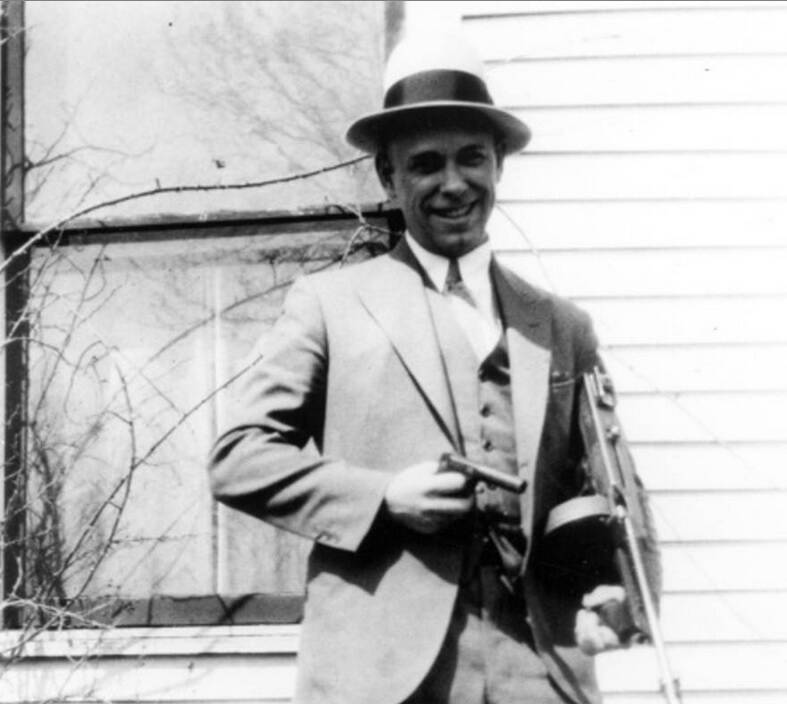
W. H. Bass/Indiana Historical SocietyJohn Dillinger with a Tommy gun and pistol in hand.
Dillinger wound up serving nine-and-a-half years behind bars for the robbery. Unable to handle the separation, his wife filed for divorce in 1929.
So, did Dillinger’s lengthy sentence really make him a criminal? Before his incarceration, Dillinger committed a smattering of one-off petty crimes. However, after nearly a decade milling with convicts in the Indiana State Prison system, he promptly carried out a string of high-profile bank robberies.
John Dillinger’s Life After Prison
Resenting society and embittered by the harshness of his sentence, John Dillinger got serious about mastering the criminal trade while in prison. He spent most of his 20s learning as much as he could about organizing stick-ups and evading the law from the convicts he spent his days with behind bars, including Harry Pierpont, Charles Makley, Russell Clark, and Homer Van Meter.
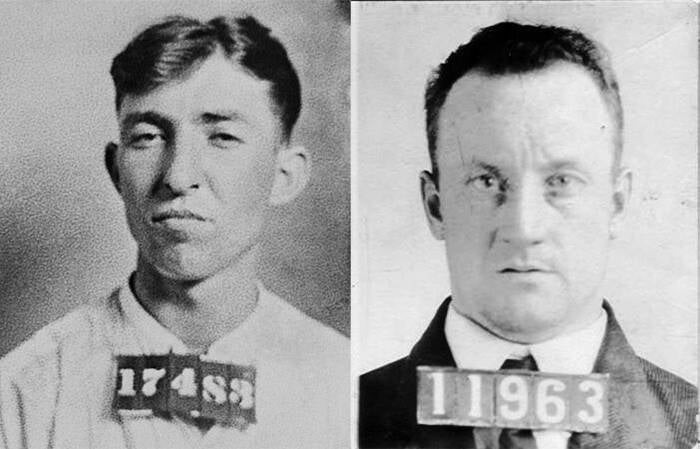
Wikimedia CommonsEddie Green (left) and John “Red” Hamilton (right), two members of the Dillinger Gang.
Dillinger was released from prison on May 10, 1933, at the age of 29. At his parole hearing, he promised to return to his family’s farm and work the land — but it was all a lie.
The Great Depression was in full force, and a job of any kind was almost impossible to find, even for the most dedicated and hard-working people. It was the perfect storm for men like John Dillinger.
Upon his release, Dillinger immediately turned to the most lucrative crime he could think of: robbing banks. Just a month after leaving prison, on June 21, 1933, he gathered a crew of men and robbed New Carlisle National Bank in Ohio.
William Shaw was part of the group, and he later recalled the details of the heist to newspaper columnist Bob Greene. As reported in the New Carlisle News, Shaw told Greene, “We got to New Carlisle while it was still dark. It was a little bank. Dillinger had gotten a good tip someplace — it went just like he said.”
Shaw continued, “We went through the window next to the toilet, and that let us in the bank. We crawled in and we lay behind the counter till the place started opening up. I remember us lying on the floor there, and John carrying a big gun. We tied the people up as they came in. We got about $13,000 out of that one.”

Federal Bureau of InvestigationThe many faces of John Dillinger.
The next month, Dillinger robbed another bank in Bluffton, Ohio. He was arrested in connection with the crimes on Sept. 22, 1933, and he was put in a county jail in Lima, Ohio, to await trial.
This time, however, he wouldn’t be behind bars for long.
Becoming ‘Public Enemy Number One’
When police officers in Lima were searching Dillinger’s belongings following his arrest, they found a document that appeared to be a plan for a prison break. Sure enough, a few days later, eight of Dillinger’s friends from Indiana State Prison escaped using the very same plan, shooting two prison guards with guns that had been smuggled into their cells.
On Oct. 12, three of the escapees came to Lima, Ohio, disguised as police officers. They showed up at the jail where Dillinger was being held and told the sheriff that they were there to return Dillinger to an Indiana penitentiary for violating his parole.
When the sheriff asked them for identification, one of the convicts pulled a gun, shot him, and beat him until he was unconscious. He later died from his injuries. They then let Dillinger out of his cell, and the fugitives all fled back to Indiana together.
In January 1934, Dillinger was captured in Tucson, Arizona. The chief of the Indiana State Police personally transported him back to Indiana to answer to charges there, and they locked him in an “escape-proof” jail in Crown Point. But on March 3, 1934, Dillinger threatened deputies with a fake pistol that he’d reportedly carved out of wood and made a successful getaway by stealing the sheriff’s car and heading to Chicago.

Keystone/Getty ImagesDillinger poses playfully with prosecutor Robert Estill and Sheriff Lillian Holley at the jail in Crown Point, Indiana.
By crossing the Indiana-Illinois border, Dillinger violated the National Motor Vehicle Theft Act, according to the FBI. That drew the attention of J. Edgar Hoover, the head of what was then the Division of Investigation (DOI), which would soon be renamed the Federal Bureau of Investigation (FBI).
Dillinger quickly reconnected with his gang, including the infamous cop-killer Baby Face Nelson. Now the subject of a nationwide manhunt, the crew holed up in Minneapolis.
By March 1934, Dillinger had moved into an apartment in St. Paul with his girlfriend, Evelyn Frechette. Their nosy landlady took an interest in the couple, and on March 30, she’d gathered enough information to go to the FBI field office and report her suspicions. The Bureau sent a pair of agents to check out her story, and they were soon confronted by an enraged Dillinger, who burst through the door and started firing his Tommy gun.
The agents shot Dillinger in the leg, and he limped away, fleeing back to Mooresville with Frechette. They didn’t stay long, however. By April 9, they were in Chicago, where Frechette was arrested. Dillinger fled yet again, ending up at a lodge in Wisconsin known as Little Bohemia.
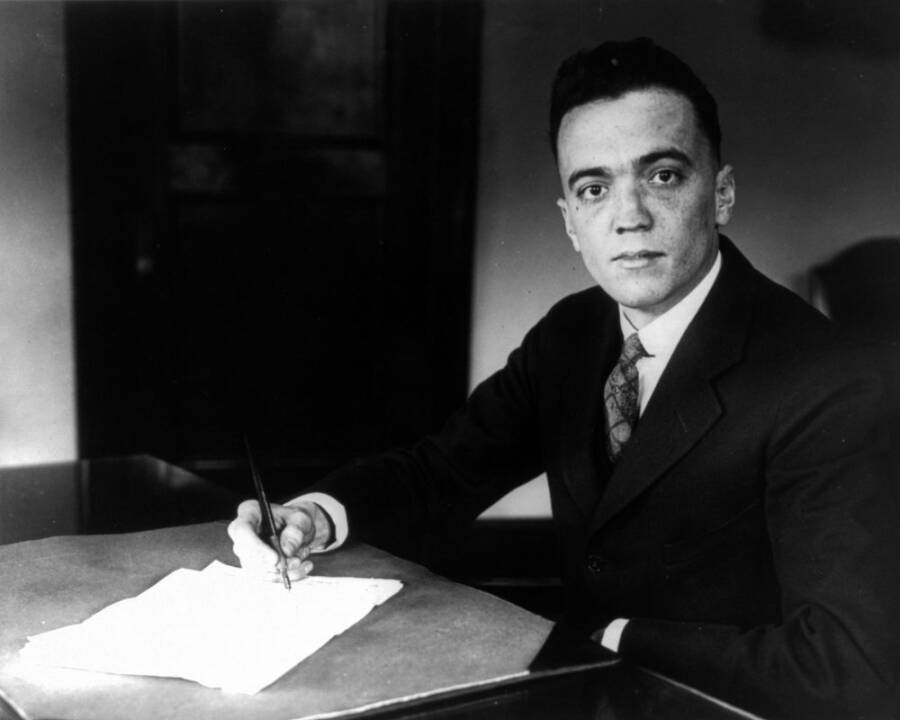
Library of CongressA young J. Edgar Hoover, the FBI’s director for nearly 50 years. The Dillinger case was an opportunity for Hoover to expand the FBI’s power.
On April 22, FBI agents received a tip that the Dillinger Gang was hiding out at the lodge. When they arrived, they engaged in yet another shoot-out with the men, but Dillinger managed to escape once more.
His luck wouldn’t last forever, though.
The Death Of John Dillinger
John Dillinger went to extreme lengths to avoid capture. In May 1934, he even paid a plastic surgeon $5,000 to alter his appearance. The surgeon removed some of his moles and scars, filled in his chin cleft, and later burned his fingerprints off.
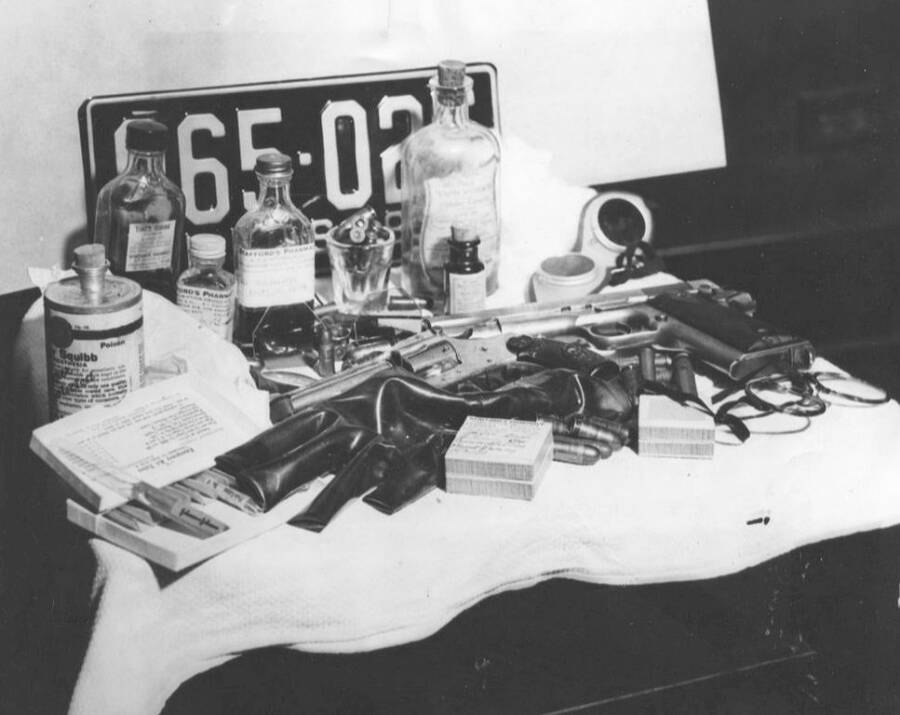
Wikimedia CommonsThe medical equipment used by a surgeon during Dillinger’s plastic surgery.
A few weeks later, Dillinger met a waitress named Polly Hamilton at a Chicago nightclub. They started dating — but Dillinger had no idea their relationship would lead to his downfall.
By this point, the FBI had a dedicated Dillinger task force that was based in Chicago, and the gangster had officially become “Public Enemy Number One.” On July 21, a Romanian immigrant and brothel madam named Ana Cumpanas (also known as Anna Sage) reached out to agents and offered information on Dillinger if they agreed to help her avoid deportation.
Cumpanas was friends with Hamilton, and she told the agents that she was planning to see a movie with Dillinger and Hamilton the following evening. She wasn’t sure which theater they were going to, so she said she would wear an orange dress so they could identify her. Thus, on the evening of July 22, 1934, police officers and FBI agents hid outside of both the Marbro and Biograph Theaters to keep an eye out for the most wanted criminal in the country.
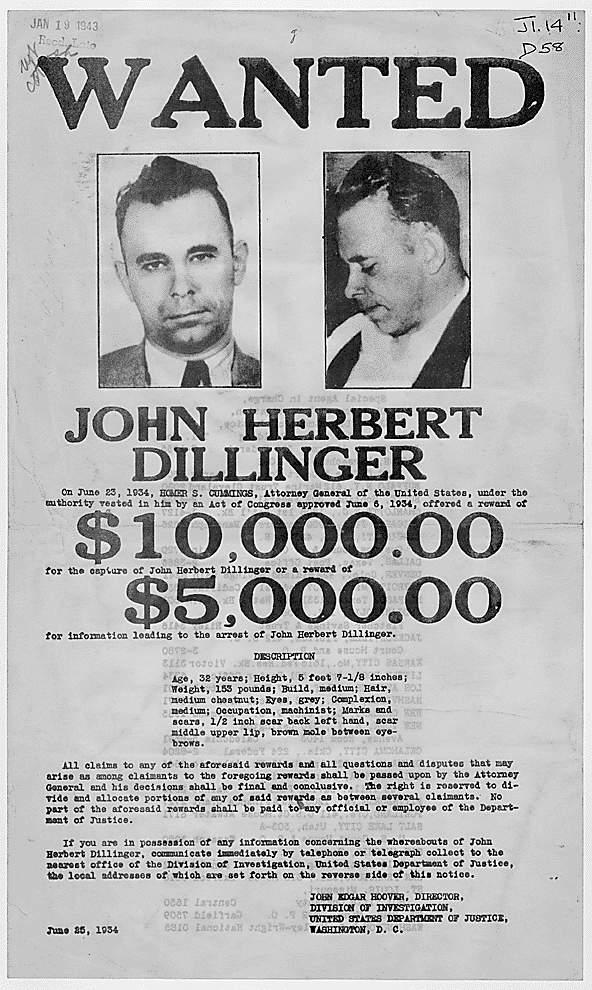
Federal Bureau of InvestigationAn FBI wanted poster for Dillinger dated June 1934.
At 8:30 p.m., agents spotted Cumpanas in her orange dress at the Biograph Theater. While Dillinger, Hamilton, and Cumpanas were inside watching Manhattan Melodrama, the other officers rushed to the scene to await Dillinger’s exit.
When the movie ended, Dillinger strolled out of the theater — and right past an FBI agent named Melvin Purvis, who lit a cigar as a signal to the others. Dillinger seemingly realized what was happening and grabbed his gun.
This was just two months after famous Depression-era robbers Bonnie and Clyde had been ambushed by the police and shot to death in Louisiana. Dillinger seemed determined not to die helplessly as they did.
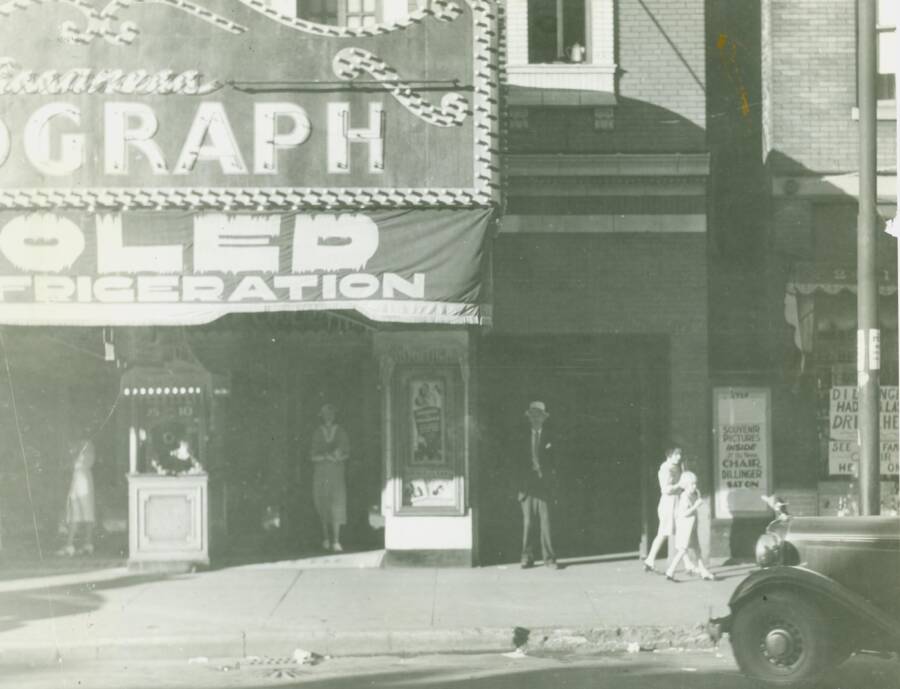
Federal Bureau of InvestigationThe Biograph Theater in Chicago where John Dillinger met his end.
He didn’t act quickly enough, though. The agents had him surrounded. Three of them chased Dillinger into an alley that they’d blocked off. Altogether, they fired six shots, hitting Dillinger four times. The bullet that struck him in the back of the neck and killed him was likely fired by Agent Charles Winstead. The 31-year-old bank robber was almost certainly dead before his body hit the pavement.
John Dillinger’s Legacy In American Popular Culture
After John Dillinger’s death, the criminal was buried in a modest grave in Crown Hill Cemetery in Indianapolis, where his grave marker has had to be replaced at least three times — in a fitting tribute, thieves keep stealing pieces of the headstone.
In the following years, some people saw him as a Robin Hood figure because he robbed the banks that many believed to be responsible for the Great Depression. The Dillinger Gang also reportedly destroyed mortgage documents held in the banks, freeing struggling homeowners from financial burden.
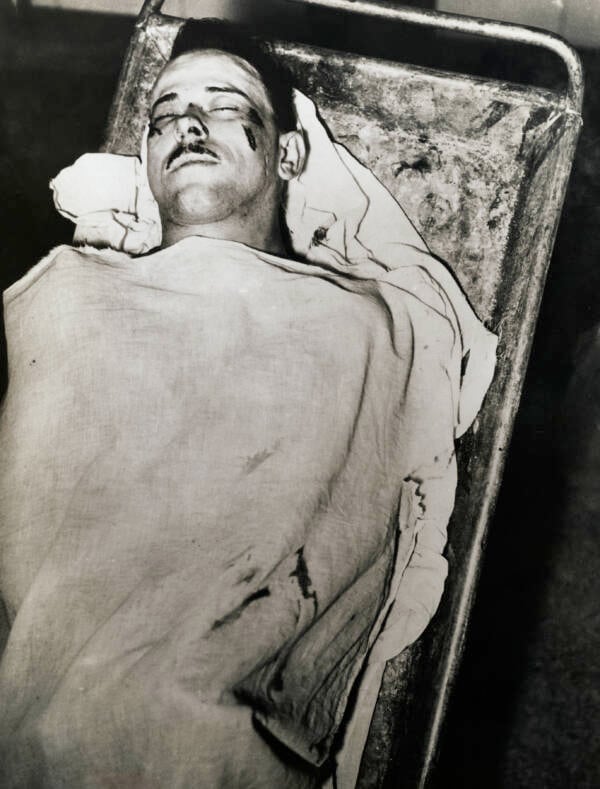
George Rinhart/Corbis/Getty ImagesJohn Dillinger in the morgue after he was fatally shot by FBI agents.
In that sense, some Americans saw him as someone who robbed from the rich to give to the poor — a man of the people.
J. Edgar Hoover did not agree with that assessment. He famously quipped, “I cannot remember a single instance in which John Dillinger fancied himself a knight-errant, obtaining revenge upon a cruel world for past injustices. Rather, he was a cheap, boastful, selfish, tight-fisted pug-ugly, who thought only of himself,” as reported by the Chicago Tribune in 1994.

Bettmann/Getty ImagesJohn Dillinger was such a celebrity by the time of his death that thousands of people visited the morgue to see his body on display.
Regardless of who was right, Dillinger’s persona was big enough to inspire the 2009 movie Public Enemies, in which he was portrayed by Johnny Depp. In total, the life and death of John Dillinger has inspired at least 14 films as well as several books and television shows — a clear sign that America still hasn’t had enough of the infamous Depression-era criminal.
After reading about the life and crimes of John Dillinger, go inside the story of Nucky Thompson, the real-life figure behind the acclaimed TV show Boardwalk Empire. Then, learn about the Cowboy Bob, the 1990s bank robber who fooled the FBI.





